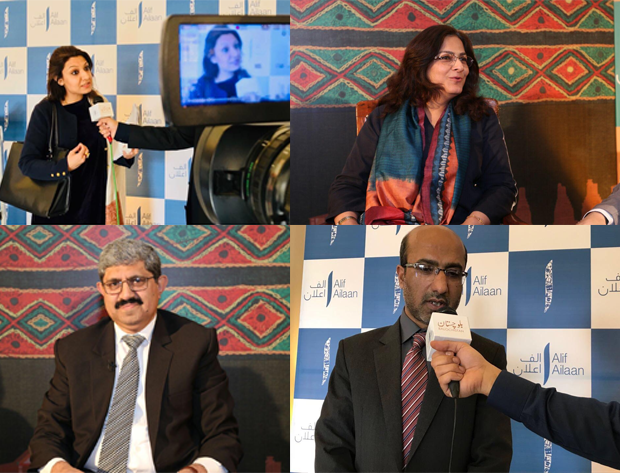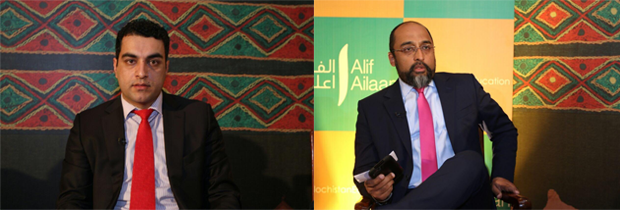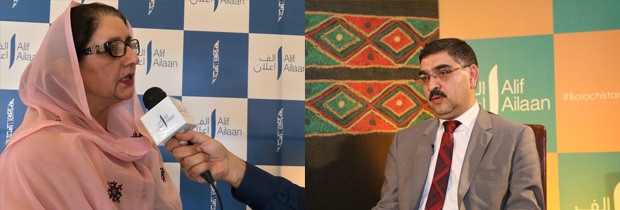|
The Government of Balochistan has invested time and resources in a
number of structural and governance reforms since 2013. These reforms
have largely been to address the challenges of providing improved
infrastructure, devolving key responsibilities, and plugging the
shortage of teachers through merit-based recruitment. However, the
impact of these reforms is still unclear. This was highlighted in
“2013-2018 Five years of education reform: Balochistan Wins, losses and
challenges for the future 2018-2023”, a report published by education
campaign AlifAilaan on Tuesday.
|
|
 |
|
The launch of the report was attended by the Minister for Education Mr.
TahirMehmood Khan and the Minister for Science and Technology Prince
Ahmed Ali. Also attending were political representatives from across the
country, including Zubeida Jalal, SardarHussainBabak, Ahmed Iqbal,
RazaHaroon and Usman Ahmed Khan Kakar.
The Balochistan Education Sector Plan (2013-2018) provided a holistic
strategy and roadmap for guiding the reforms process over the following
five years. It put special emphasis on improving quality, equity and
governance. Under BESP, the Balochistan government implemented reform
initiatives like real-time monitoring, standardised testing of learning
levels, restructuring of governance systems through District Education
Authorities (DEA), and improved education financing.
|
|

|
|
Despite these reform efforts of the provincial government, enrolment,
retention, learning outcomes, and school infrastructure all continue to
pose substantial challenges to the provincial authorities.
AlifAilaan’s detailed report on Balochistan education makes the
following recommendations:
1. The government needs to focus on immediate provision of middle and
high schools across the province.
To address long distances and low
population density, a much higher proportion of high schools must
be
residential for students and teachers. Additionally, all high schools
should have middle school classes added to them.
2. Number of out of school children between the ages of 10-16 years is
twice that of children between the ages of 5-9 years. This represents a
major challenge since incorporating children from the former age group
into the formal schooling system starting from primary levels is not a
viable solution. The government needs to introduce accelerated learning
programs that can ensure adequate means for these students to be
situated in the formal schooling system.
3. The devolution of powers through the cluster management system, and
the local and district education groups needs to implemented in a manner
where timely decision making can be undertaken with the requisite fiscal
powers.
4. The increase in education budget needs to be met with commensurate
increase in the effectiveness of financial management system in order to
ensure adequately absorb increased funding. This calls for a focus on
not only year on year increases in education allocations, disbursements
and utilisation, but also marked improvements in the efficiency with
which funds are spent
5. The Secondary Education Department must focus on improved teaching
and learning capacity at all levels to ensure greater participation in
the examinations as well as better performance of all students. Simple
curbing of cheating without improvement in teaching will not be enough.
There is also a need to focus on teacher training targeting improved
teaching and learning
of languages through ensuring that teachers and
children are able to operate in a learning environment that is most
conducive to learning.
6. A new, and targeted effort to address the most remote thinly
populated areas is therefore an urgent priority for Balochistan.
This
focus will not only elevate access to quality education in these
districts but also address sociopolitical concerns about inequitable
progress in the province .
7. Invest substantially more in new technologies to solve education
challenges in Balochistan. Solar energy can address the absence of
electricity across a wide swathe of government schools
in Balochistan.
Similarly, bespoke language-based digital content can be used to enable
and empower teachers across the province.
8. In order to cater to challenges pertaining to provision of schooling
to communities with low population density, the Balochistan Residential
Colleges model may need to be expanded to cater to both boys and
girls
across Balochistan.
|
|

|
|
At the launch of the report in Quetta, a coalition of 25 organisations,
working for the improvement of education in Balochistan, presented the
Balochistan Minister for Education Mr. TahirMehmood Khan with the
Balochistan Education Charter. This charter proposes legislative,
management, financial and education quality interventions, which can
bring both immediate and long-term impact in Balochistan education’s
struggle with enrolment, school infrastructure, and learning outcomes.
|